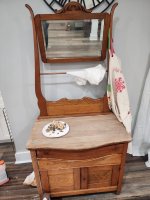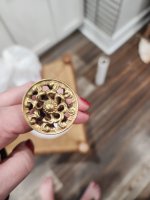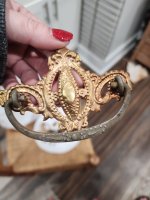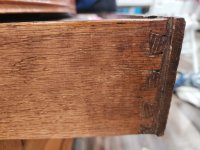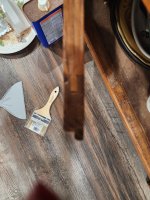Julie4austin
Newbie
- Jan 1, 2024
- 3
- 1
This has been in my family as long as I can remember. The recently cleaned hardware is sitting on top in the picture. The mirror is beveled. The top has been stripped which exains the coloring. No wording is on it anywhere.


